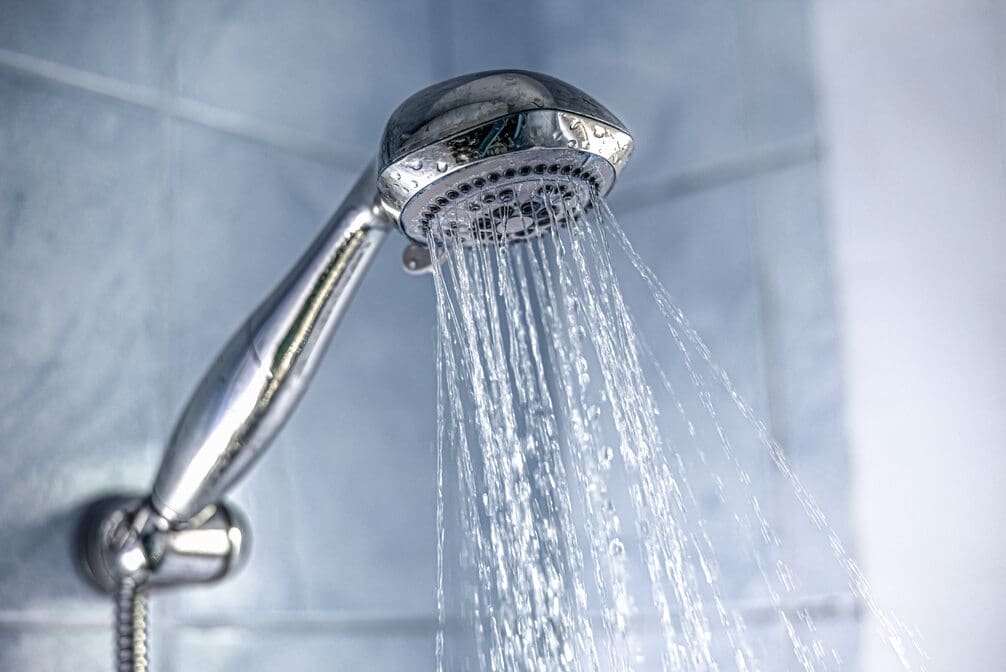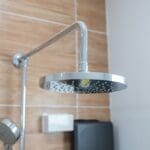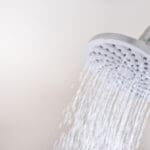Finding yourself in hot water with a shower head that’s decided to go rogue and detach itself can be more than just a minor inconvenience. You’re now faced with the task of rectifying this unexpected shower surprise, but fear not; it’s a fixable issue.
Key Takeaways
- Assess the damage and understand the importance of a well-maintained connection.
- Gather the necessary tools, including wrenches, tape, and pliers.
- Remove the damaged parts, clean them, and inspect for leaks or worn-out washers.
- Install a new shower head, ensuring a good seal and proper tightening.
Assess the Damage
First, you’ll need to closely examine the shower head and its connecting parts to identify any visible damage. It’s crucial to assess the damage accurately to understand the extent of the repair needed. Start by looking at the head itself for any cracks or breaks that might be the cause of it falling off.
Next, check the area where the head connects to the water supply pipe. This connection is vital for maintaining a watertight seal, and any damage here could be the culprit. If you find cracks or signs of wear, it’s a clear indication that parts may need replacing to ensure the shower head stays securely in place.
Don’t overlook the importance of this step; assessing the damage thoroughly will save you time and effort in the long run. After you’ve taken stock of the situation, you’ll have a better understanding of what’s required to create a watertight seal and prevent future mishaps. Remember, a well-maintained connection not only keeps the head in place but also ensures that your shower operates efficiently without leaks.
Gather Your Tools
Having assessed the damage, it’s crucial to gather the right tools for a successful repair. When you’re ready to fix a shower head that’s fallen off, making sure you have everything you need will make the process smoother and more efficient. Here’s a list of essential tools:
- Adjustable wrenches or strap wrenches: These tools are indispensable for loosening and tightening the shower head without causing damage.
- Teflon tape (also known as plumber’s tape): Essential for creating a water-tight seal on the threads of your shower head. Wrap plumbers tape around the threads before installing the new head.
- Pliers: Sometimes, a wrench just won’t fit. Pliers can help you grip and turn parts that are hard to reach.
- Soft cloth: Use cleaning cloths to protect the finish of your shower fixtures while you work. Wrapping a soft cloth around the jaws of your tools can prevent scratches and damage.
Before you start, remember to turn off the main water source to avoid any unexpected showers. With these tools at hand, you’re well on your way to fixing your shower head quickly and efficiently.
Remove Remaining Parts
Before proceeding with repairs, it’s crucial to remove any remaining parts of the damaged shower head to accurately assess and address the issue. Start by unscrewing and taking off the leaking shower head to get a clear view of what you’re dealing with. This step is essential to identify the root cause of the leak and figure out the best course of action.
Next, it’s time to tackle any build-up that might be hindering the shower head’s functionality. Scrape off any grit or sediment that’s visible. To ensure a thorough clean, soak the components in an acetic liquid, such as white vinegar. This will help break down mineral deposits that often clog and impair the shower head.
Inspect the shower arm closely—the part that connects the shower head to the water supply. If you find leaks, try tightening it to see if that resolves the issue. Sometimes, replacing worn-out washers is necessary to fix a shower arm that’s leaking.
In cases where the leak is located at the swivel part, unscrewing it from the swivel-ball ring allows you to replace the O-ring or seal inside. Once done, screw it back into place, ensuring all components connect securely.
If these steps don’t fix the problem, consider replacing the shower head entirely.
Install New Shower Head
Why not elevate your shower experience by installing a new shower head? It’s a straightforward task that significantly improves water flow and quality. If you’ve decided you need a new one, especially to enhance the swivel feature or simply to boost water flow, here’s how to do it:
- Choose Your Shower Head: Before you buy one, consider your needs. Do you prefer a fixed model or one with a swivel feature for greater flexibility? Look at the water flow rates to ensure it meets your expectations.
- Remove the Old Shower Head: Unscrew the old shower head from the shower arm by turning it counterclockwise. If it’s tight, use a wrench but wrap a cloth around the shower head to prevent scratches.
- Clean the Shower Arm Threads: Wipe the threads of the shower arm with a clean cloth to remove any debris or old plumber’s tape. This ensures a good seal with the new shower head.
- Install the New Shower Head: Wrap some plumber’s tape clockwise around the shower arm threads to prevent leaks. Screw the new shower head onto the shower arm by hand. Tighten it securely, but be careful not to overtighten and damage the threads.
This simple upgrade can make a significant difference in your daily routine by enhancing your shower’s water flow and overall experience.
Test and Secure
After installing your new shower head, it’s crucial to test the water flow and secure the connection to prevent any leaks.
Turn on the water and observe the flow; it should be consistent and free of any sputtering. If you notice anything off, it’s time to come back and tighten things up a bit more. Sometimes, all it takes is a little bit of adjustment to get everything working pretty good.
Make sure to securely tighten the shower head onto the shower arm. This doesn’t mean you should overdo it—just ensure it’s snug enough to prevent future loosening or leaks. For an added layer of security, consider wrapping plumber’s tape or applying joint compound to the shower arm threads before reattaching the shower head. This step can significantly minimize the risk of leaks.
If, after all these efforts, there’s still a leak at the swivel part, it’s likely due to a worn-out O-ring or seal inside. Check and replace these components if necessary.
Frequently Asked Questions
How Do You Fix a Shower Head That Keeps Falling Off?
To fix a shower head that keeps falling off, you’ll need to check the threads, apply joint compound or tape, and replace any worn-out washers or O-rings before tightening it securely back in place.
How Do You Reattach a Shower Head?
To reattach your shower head, first clean the threads on both the shower arm and head. Then, apply new plumber’s tape clockwise. Screw the head back on by hand, and tighten it gently with a wrench.
Why Does My Shower Head Keep Popping Off?
Your shower head keeps popping off due to grit, sediment buildup, or mineral deposits. A leaky connection or worn-out rubber washers could also be to blame. Replacing the O-ring or seal might fix it.
How Do You Secure a Loose Shower Head?
To secure a loose shower head, first, remove and clean it. Then, use adjustable wrenches to tighten the shower arm and replace any worn washers or O-rings. If it’s still loose, consider a new shower head.





